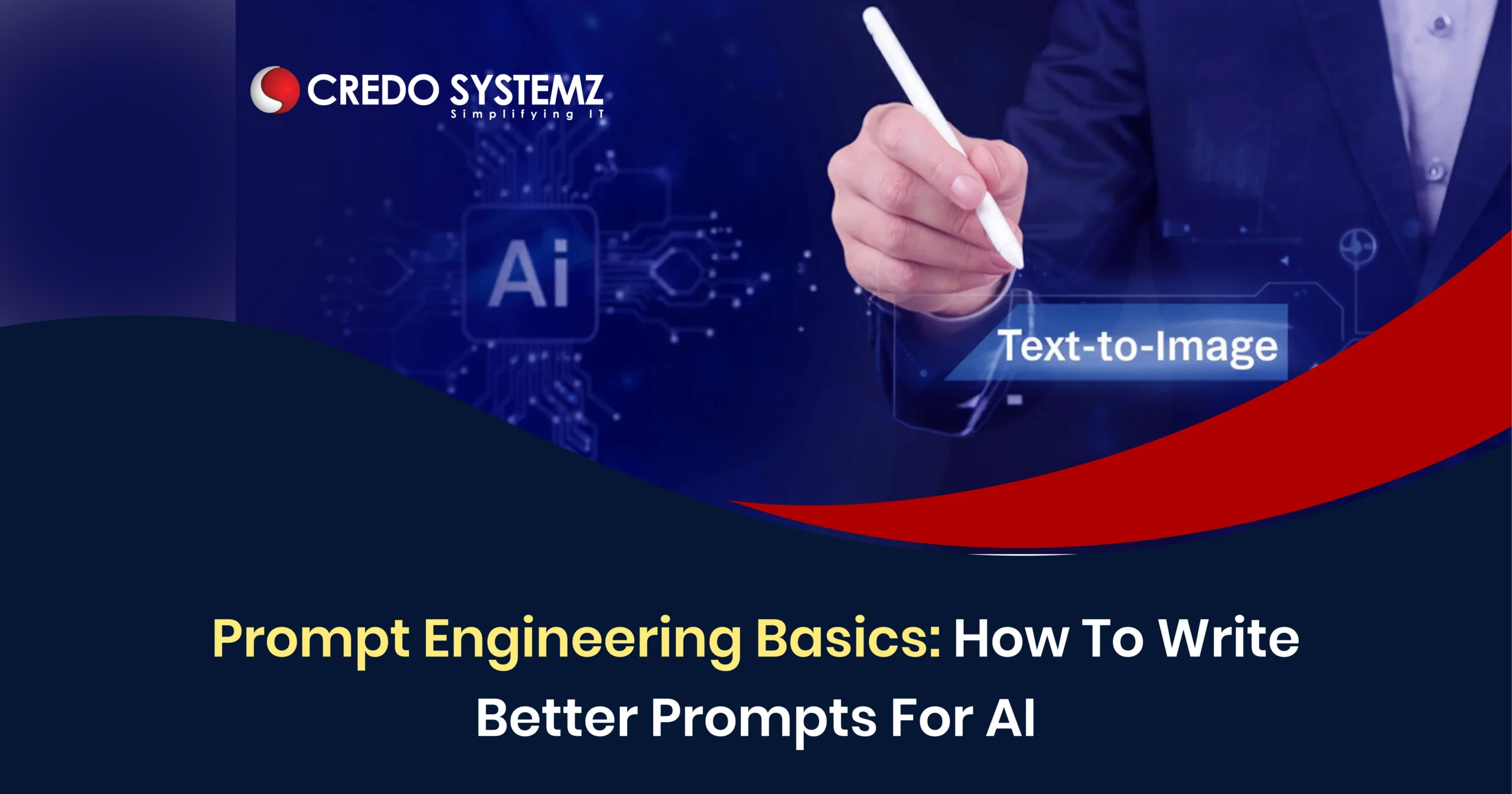
Artificial Intelligence (AI) tools have revolutionized the way of creating, learning, and solving problems. The full potential of ChatGPT, Google Gemini, and Claude can be gained by Prompt Engineering. Effective prompts help you to get accurate, creative, and high-quality results from AI models. Let’s explore the basics of prompt engineering and how you can craft better prompts for smarter AI responses.
Prompt Engineering
Prompt Engineering is the art and science of designing inputs (prompts) that guide AI systems to produce the desired output. A “prompt” can be a question, command, or piece of context that helps the AI understand what you want. The clearer and more specific your prompt, the better the AI’s response.
For example:
- Vague Prompt: “Write about data science.”
- Better Prompt: “Write a 200-word beginner-friendly article explaining what data science is and why it’s important in 2025.”
The better prompt gives the AI structure, tone, and purpose which leads to a more useful result.
Why Prompt Engineering Matters
Prompt engineering bridges the gap between what you want and what AI delivers. AI models respond based on how they interpret your input. A well-crafted prompt can save time by reducing rework. It also improves accuracy and creativity in responses.
Structured Prompts can tailor output to your specific needs like style, tone, or format. It helps professionals in writing, coding, data analysis, and education maximize AI efficiency.
Key Principles of Writing Better Prompts
The important principles to be followed while writing better prompts are:
- 1. Be Clear and Specific: AI tools perform best when given precise instructions.
Example: “Explain cloud computing in simple terms using a real-life example.”
Avoid: “Tell me about cloud computing.”
- 2. Provide Context: Give background details or constraints to shape the response. This tells the AI the audience and platform, influencing tone and format.
Example: “Write a LinkedIn post about Python for data analytics for beginners.”
- 3. Define the Format: Tell the AI how you want the response like paragraph, list, table, or step-by-step guide.
Example: “List five tips to improve AI prompts with one example for each.”
- 4. Use Role-based Prompts: Assigning a role helps AI adopt the right perspective.
Example: “Act as a career coach and write a motivational paragraph for job seekers in tech.”
- 5. Iterate and Refine: Prompt engineering is an iterative process. Start with a draft, review the AI’s response, and refine your prompt for better results.
Common Prompt Patterns You Can Try
The common prompt patterns which will ensure the best results are:
- Instruction-based Prompt:
“Explain the difference between supervised and unsupervised learning in simple terms.” - Example-based Prompt:
“Summarize the following paragraph in one line: [insert text].” - Chain-of-thought Prompt:
“Think step by step before giving the final answer.” - Comparative Prompt:
“Compare ChatGPT and Google Bard for content creation.” - Creative Prompt:
“Write a short story about a robot learning to paint.”
Real-World Applications of Prompt Engineering
- Content Creation: Craft blog posts, emails, or scripts efficiently.
- Coding: Generate, debug, or explain code snippets.
- Data Analysis: Write SQL or Python code for data cleaning or visualization.
- Education: Create quizzes, summaries, and personalized learning materials.
- Marketing: Develop ad copy, product descriptions, or SEO content.
Tips to Master Prompt Engineering
AI responds best to users who learn by doing, so keep practicing to improve your prompt that ensures better results. Use specific keywords that reflect your goal and avoid ambiguous instructions.
Experiment with temperature or tone (creative, formal, humorous). Add constraints like word count, audience level, or output format.
Conclusion
Prompt engineering is not just about asking AI questions — it’s about communicating effectively with machines. The more clearly you define your intent, the better AI can serve you. Whether you’re a student, developer, marketer, or educator, mastering prompt engineering will give you a powerful edge in the AI-driven world.
FAQ
A prompt is a text input that guides AI tools to generate a specific response or perform a task.
No. Anyone can learn prompt engineering with practice and clarity in communication.
A good prompt is clear, detailed, and defines the context, role, and format of the response.
Yes. Specific and structured prompts help AI generate more relevant and precise results.
